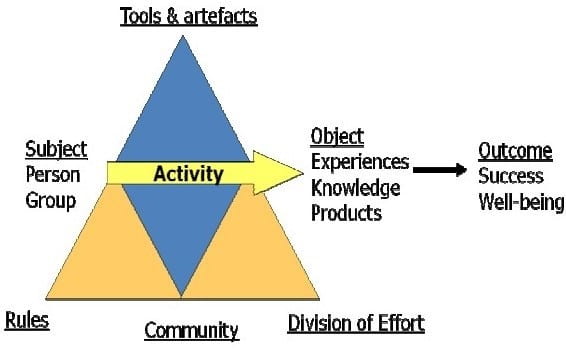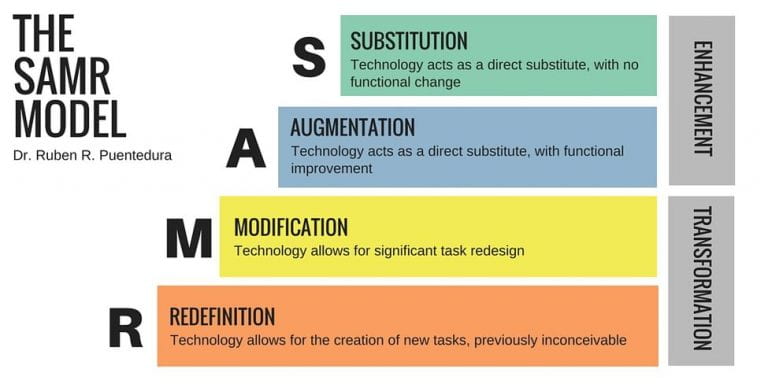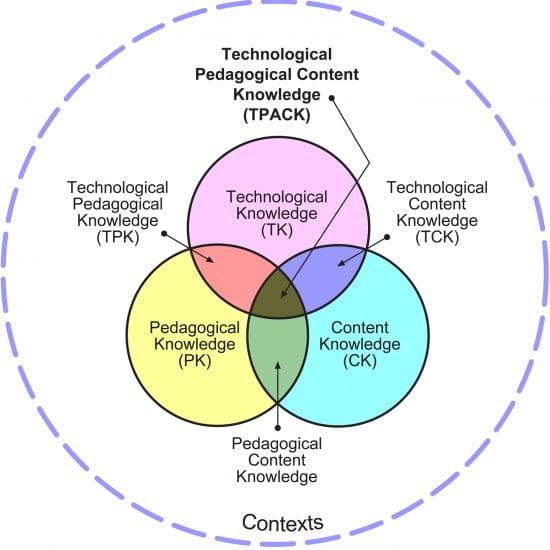Nadya Shaznay PATEL
Centre for English Language Communication (CELC)
Nadya weighs in on the factors she has to consider when it comes to selecting technological tools to enhance teaching in her language and communication courses, taking a deep dive into some selected theoretical frameworks along the way.

When I first started teaching the English language almost 20 years ago, I had already realised that traditional literacies like reading and writing will continue to be crucial skills, but on their own they are not sufficient to achieve success in today’s globally digital environment. Fast forward all these years, I believe that for educators to equip learners with today’s equally crucial 21st-century competencies, appropriate learning and teaching approaches supported by emerging technology-enabled pedagogical models need to be developed. Research has shown that harnessing the affordances of technologies can potentially revolutionalise the advancement of 21st century skills (and competencies) such as new media literacies, collaboration, communication and global awareness (Lin et al., 2015). ).

Source: The Human Activity System (Engestrom, 1987)
With the conclusion of the Open Networked Learning course1, I recall designing curricula based on the Activity Theory as a conceptual model (Engestrom et al., 1999). Activity Theory builds on Vygotsky’s (1978) work and is a way of considering learning using three features—involving a subject (learner), an object (task or activity), and tool or mediating artefacts. Its central tenet is that human behaviour is situated within a social context that influences their actions. The meanings of actions are mediated by the rules of their community, and the division of labour within the community influences members’ behaviours (Scanlon et al., 2005). The Activity Theory’s emphasis on tools, including computer-based tools in the way activities are mediated, is very helpful as I look towards improving my future practice in teaching English and Communication Studies at the under- and postgraduate levels. This would shift my attention away from simply the interaction between technology and the learner to the activity as a whole. Figure 1 illustrates the interplay of the subject (learner), tools (learning tasks), and object of learning as it relates to the framework affordances in designing learning tasks.
Drawing on Activity Theory facilitates the design of learning tasks that reflect the authentic classroom practices of the wider community of learners, incorporate and build on learners’ identities, and provide diverse scope for engagement of learning. However, it may not be enough to account for the contextualised leveraging of technologies in language and communication studies instruction. Puentedura’s (2006) SAMR model of the Levels of Technology Usage, comprising four levels—Substitution, Augmentation, Modification and Redefinition—was also helpful as I consider the affordance of a particular tool in enhancing my lessons’ learning outcomes. For example, how will using tools like Sutori and Padlet help my students to collaboratively deepen their understanding, and internalise and critically think through the concepts of Engineering Leadership? At the very least I would need to consider how using these tools would allow me to modify my task design which might otherwise be impossible if I merely used the tools to replace the whiteboard during teaching and learning.

Source: Wikiversity.org
These reflections lead me to the all too familiar ‘potential-practice gap’, which potentially poses a challenge to the further emancipation of technologies as a viable option for, in my context, the learning and teaching of language or communication studies. Scholars have argued that knowledge about technology cannot be treated as context-free, and that good teaching requires an understanding of how technology relates to the pedagogy and content. Thus, I have always fallen back on Koehler and Mishra’s (2006) Technological Pedagogical Content Knowledge (TPACK) framework (Figure 3). It serves the foundations for argument on the need for pedagogically informed ways of learning and teaching with technologies. Central to understanding the TPACK framework is the capacity to separate the three components (i.e., content, pedagogy, and technology) while also understanding that they co-exist in a dynamic transactional relationship (Mishra & Koehler, 2006). True technology integration is understanding and negotiating the relationships between these three components of knowledge. Such an understanding provides a foundation for new pedagogical outcomes that enable educators to effectively teach, especially in the unprecedented times of emergency remote teaching. It is also with this understanding that I will continue to use TPACK as a framework for assessing effective use of the technologies integrated to achieve the specific learning outcomes of my redesigned instruction.

Source: tpack.org
In conclusion, I believe that implementing technology-enhanced learning and teaching, particularly in my context of language and communication instruction, involves establishing frameworks of language learning and teaching on the basis of which decisions about technology use can be made. Mishra and Koehler (2006) assert that with the TPACK model, just knowing the technology or having technology content knowledge is inadequate for applying technology effectively and helping students learn new literacies:
“Effective technology integration for pedagogy around specific subject matter requires developing sensitivity to the dynamic, transactional relationship between all three components.” (Mishra & Koehler, p. 1030).
Lots indeed for me to consider when it comes to improving my practice!
 |
Nadya Shaznay PATEL, an Assistant Professor at the Singapore Institute of Technology (SIT), previously taught critical thinking and writing, community leadership, engineering leadership and English for academic purposes with the Centre for English Language Communication (CELC) at NUS. She also conducted consultancy training for professionals and executives on business communication, effective communication for leaders, communicating your personal brand, and interview, presentation and leadership skills. Her research interests include classroom discourse, conversation analysis, dialogic scaffolding, multimodality in the areas of English in Disciplines and communication studies. Nadya previously contributed a post reflecting on open education resources (OERs). Nadya can be reached at Nadya.Patel@SingaporeTech.edu.sg. |
Endnote
- Open Networked Learning (ONL), an open online course, is offered as a freely available open course as well as continuation course in higher education pedagogy for teachers at the collaborating institutions.
References
Engeström, Y. (1987). Learning by expanding: An activity-theoretical approach to developmental research. Orienta-Konsultit.
Engeström, Y., Miettinen, R., & Punamäki-Gitai, R. (1999). Learning in doing : social, cognitive and computational perspectives. In Engeström Y., Miettinen R., & Punamäki R.(Eds.), Perspectives on activity theory. Cambridge University Press. https://doi.org/10.1017/CBO9780511812774
Lin, T. B., Chen, D. T., & Chai, C. S. (2015). New media and learning in the 21st century: A socio-cultural perspective. Springer Singapore. http://dx.doi.org/10.1007/978-981-287-326-2
Mishra, P., & Koehler, M. J. (2006). Technological pedagogical content knowledge: A framework for integrating technology in teachers’ knowledge. Teachers College Record, 108 (6), 1017–1054. http://one2oneheights.pbworks.com/f/MISHRA_PUNYA.pdf
Puentedura, R. R. (2006, August 18). Transformation, technology, and education. Hippasus. http://hippasus.com/resources/tte/
Scanlon, E., & Issroff, K. (2005). Activity Theory and higher education: Evaluating learning technologies. Journal of Computer Assisted Learning, 21(6), 430–439. DOI: https://doi.org/10.1111/j.1365-2729.2005.00153.x
Vygotsky, L. S. (1978). Mind in society: The development of higher psychological processes. Cole M., John-Steiner V., Scribner S., & Souberman E. (Eds.). Harvard University Press.

